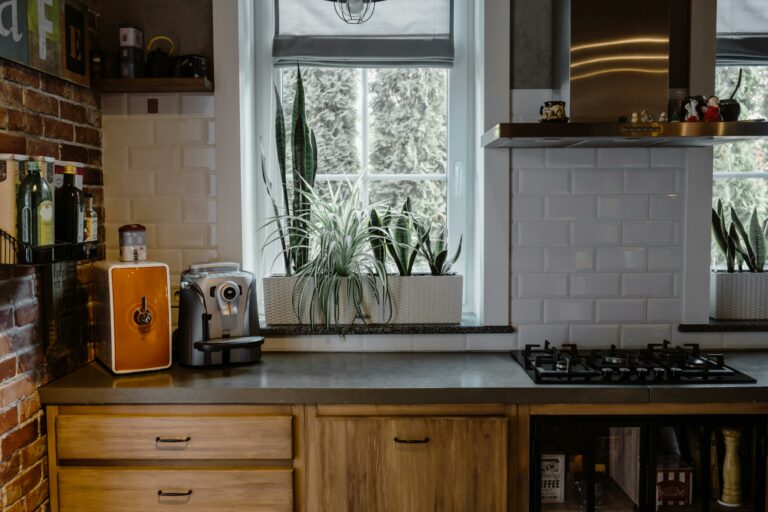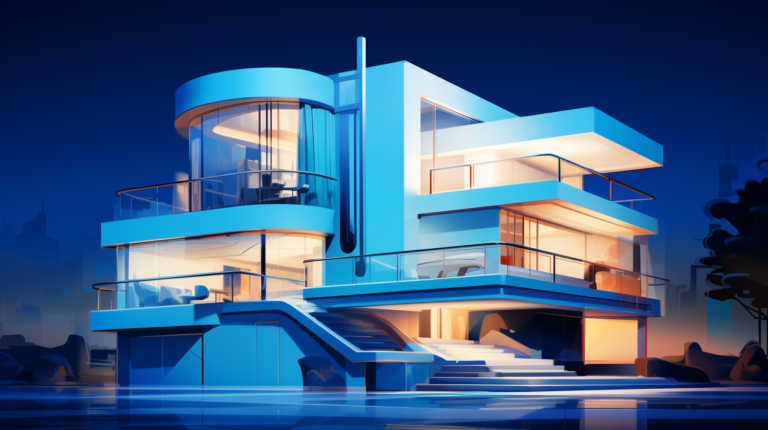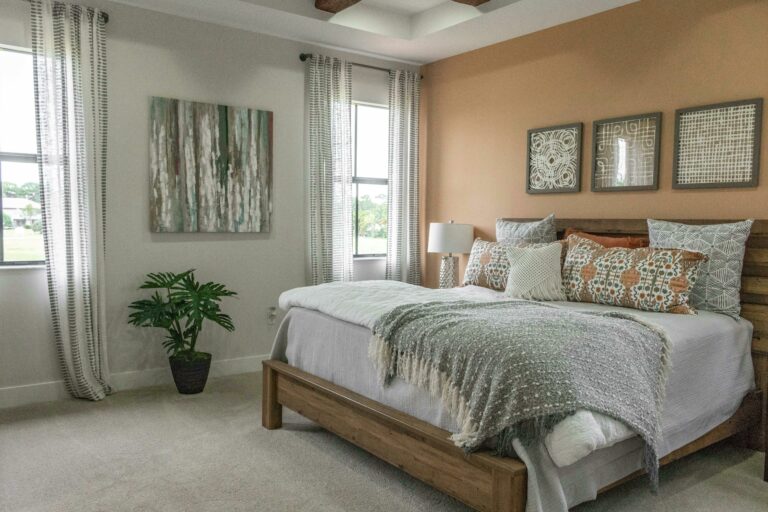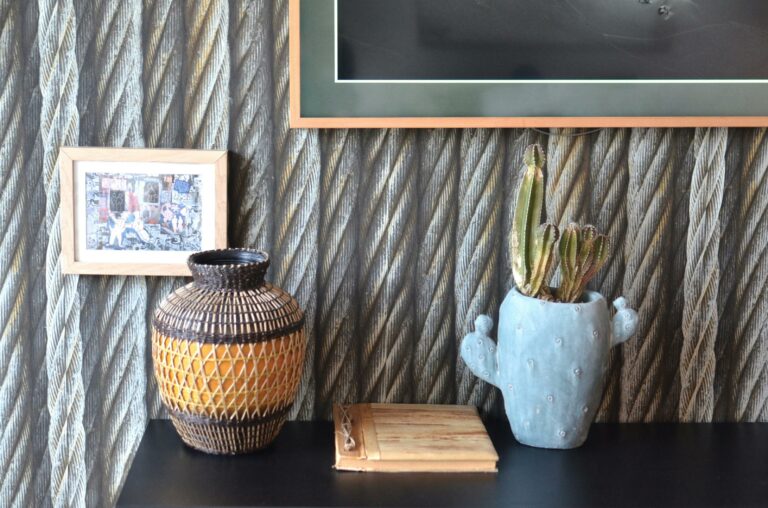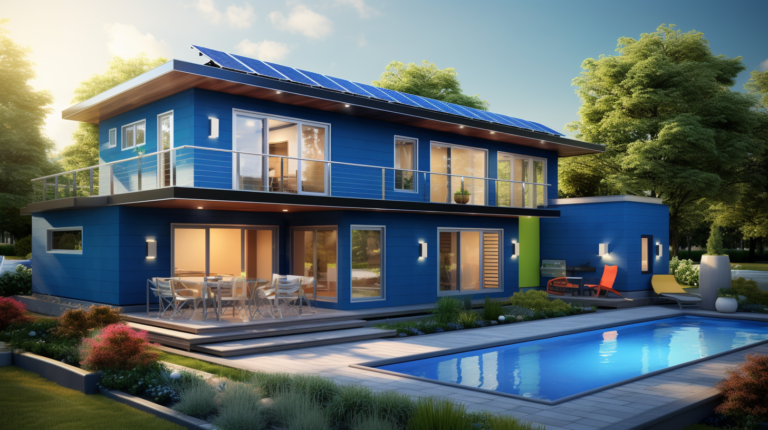Transforming Your Home: Innovative Architectural Ideas
When it comes to transforming your home, the possibilities are endless. From the layout and functionality to the aesthetics and overall feel, every homeowner dreams of creating a space that reflects their unique style and enhances their daily living experience. In today’s ever-evolving field of architecture, innovative ideas and technologies have opened up a whole new world of possibilities for homeowners and architects alike.
Table of Contents
Innovative Architectural Ideas
In this article, we will explore the fascinating realm of architectural innovation and its impact in transforming residential spaces. From the global market for architectural technologies to the role of innovation in addressing inefficiencies and improving return on investment (ROI), we’ll delve into the cutting-edge trends shaping the industry. Moreover, we’ll explore the top interior design trends for 2024 that are set to make waves in the world of home transformation. Whether you’re planning a major renovation or simply seeking inspiration, this article will provide you with valuable insights and ideas to bring your dream home to life.
So, if you’re ready to explore the exciting world of architectural innovation and discover the latest interior design trends, let’s dive in!
Evolving Field of Innovative Architectural Ideas

Architecture is an art form that has been evolving and adapting to the changing needs of society for centuries. With advancements in technology, the field of architecture has seen a significant transformation, leading to innovative design practices and techniques. In this article, we will explore some of the key aspects that have shaped the evolving field of architecture in recent years.
Use of BIM in Design
One of the most influential advancements in architectural technology is the use of Building Information Modeling (BIM) in the design process. BIM has revolutionized the way architects conceptualize, design, and construct buildings. In fact, studies suggest that as many as 75% of architects now regularly incorporate BIM into their design workflows.
So, what exactly is BIM? BIM is a digital representation of a building’s physical and functional characteristics. It allows architects to collaborate with various stakeholders, including engineers, contractors, and clients, throughout the design and construction phases. The benefits of using BIM in architecture are numerous:
- Improved design coordination and clash detection
- Enhanced visualization and communication of design intent
- Greater project efficiency and cost savings
- Integration of sustainability analysis and energy performance simulation
Advancements in Technology
Architecture is witnessing a technological revolution with the introduction of innovative tools and techniques.
Here are some advancements that are shaping the field of innovative architectural ideas :
- Generative Design: Generative design is an emerging field that leverages algorithms to explore and generate alternative design solutions. By inputting design goals and constraints, architects can use generative design software to rapidly explore multiple design options, freeing up time for creative exploration.
- Virtual and Augmented Reality: Virtual reality (VR) and augmented reality (AR) have become powerful tools in architecture, enabling immersive experiences and real-time visualizations. Architects can use VR and AR to walk clients through virtual building models, helping them understand the spatial qualities and design elements in a more engaging way.
- Robotic Architecture: The integration of robotics in architecture is expanding the boundaries of what is possible in terms of complex geometries and construction techniques. Robotic systems can automate labor-intensive tasks, such as fabrication and assembly, resulting in greater precision and efficiency in building construction.
With these technologies and advancements, the field of architecture is experiencing a paradigm shift, allowing architects to push boundaries and create innovative designs that were once only imagined. As advanced technologies such as the Internet of Things (IoT), virtual reality (VR), and 3D printing continue to evolve, we can expect even more exciting developments in the years to come[4].
In conclusion, the field of architecture is constantly evolving, driven by advancements in technology. The global market for architectural technologies is booming, with a projected value of $7.8 billion by 2027. The use of BIM in design has become a standard practice, resulting in improved coordination, communication, and project efficiency. Furthermore, advancements such as generative design, virtual and augmented reality, and robotic architecture are reshaping the design process and pushing the boundaries of what is possible in architecture[4]. With these advancements, architects hold the power to create sustainable, visually stunning, and technologically advanced buildings that enhance our built environment.
Also Read : Embracing Minimalism: How to Create a Minimalist Home in 2024
Growth and Trends in Innovative Architectural Ideas

The architecture industry has always played a crucial role in shaping the world we live in, and its growth and trends have a significant impact on our built environment. In recent years, the industry has experienced some exciting advancements and transformations. From embracing cutting-edge technology to adapting to the challenges posed by the COVID-19 pandemic, architects are constantly evolving to meet the demands of a rapidly changing world.
Global Growth Rate of the Architecture Industry
The global architecture industry is projected to enjoy a robust growth rate of 4.2% from 2020 to 2027. This growth can be attributed to a variety of factors, including urbanization, increased infrastructure development, and the rising demand for sustainable and energy-efficient buildings. As cities expand and populations grow, the need for skilled architects who can design innovative and functional spaces becomes even more crucial.
Impact of COVID-19 on New Architects
The COVID-19 pandemic had a significant impact on various industries, and the architecture industry was no exception. In 2020, the number of new architects entering the field fell by 39% compared to the three-year average prior to the pandemic. The economic uncertainties and disruptions caused by the pandemic led to delays and cancellations of construction projects, which in turn affected the demand for new architects. However, as the world gradually recovers from the pandemic, it is expected that the industry will rebound, offering new opportunities for aspiring architects.
Embracing IoT for Building Design
With the advent of the Internet of Things (IoT), architects are leveraging technology to design smarter and more efficient buildings. IoT refers to the network of interconnected devices that collect and exchange data. By incorporating IoT into building design, architects are able to create intelligent spaces that can adapt and respond to occupants’ needs.
Architects are starting to design buildings around IoT and using sensors to collect data on buildings. This data can provide valuable insights to optimize energy consumption, enhance occupant comfort, and improve overall building performance. For example, sensors can monitor and adjust lighting, temperature, and ventilation systems based on real-time information, ultimately leading to more sustainable and comfortable spaces.
In conclusion, the architecture industry is experiencing significant growth and evolving trends. From embracing technology-driven solutions to navigating the challenges brought about by the COVID-19 pandemic, architects are at the forefront of shaping the future of our built environment. As cities continue to expand and new design challenges arise, the demand for skilled architects who can adapt and innovate will remain strong.
Residential Sector and Architectural Work

The residential sector has been experiencing a significant uptick in work for architecture firms. With nearly 2 in 5 firms reporting an increase in their workload, it’s clear that there is a growing demand for architectural services in the residential market.
This surge in activity can be attributed to several factors, including :
- Renovation and remodeling projects: Homeowners are increasingly investing in renovating and remodeling their properties, whether to improve functionality, increase energy efficiency, or simply to refresh the aesthetics. As a result, architecture firms are being called upon to devise innovative and creative solutions to transform existing homes.
- New housing construction: The demand for new housing remains strong, driven by population growth, urbanization, and changing housing preferences. Architecture firms are being engaged to design new residential developments, ranging from single-family homes to multi-unit complexes. The emphasis on sustainable and eco-friendly designs is also contributing to the need for architectural expertise.
- Custom home design: Many homeowners are seeking unique, personalized homes that reflect their individual tastes and lifestyles. This has created a niche market for custom home design, where architects work closely with clients to create one-of-a-kind residences that meet their specific needs and aspirations.
The increase in work for architecture firms in the residential sector presents both opportunities and challenges. On one hand, it offers architects a chance to showcase their creativity and problem-solving abilities by delivering innovative and functional designs. On the other hand, it puts pressure on firms to meet the growing demand while ensuring timely project delivery and maintaining high quality standards.
According to a recent survey conducted among architecture firms, some additional insights were gathered:
- 39% of architecture firms reported an increase in work opportunities within the residential sector.
- Among the firms that witnessed an increase, the majority reported a moderate growth in their workload.
- The primary factors contributing to the increase in work for architecture firms were identified as renovation and remodeling projects, followed by new housing construction and custom home design.
In summary, the residential sector is witnessing a surge in work for architecture firms, driven by an increased demand for renovation, new construction, and custom home design. Architects are at the forefront of creating innovative and functional spaces that cater to the evolving needs and preferences of homeowners. As the residential sector continues to expand, architects will play a crucial role in shaping the future of our living spaces.
Role of Innovative Architectural Ideas

Innovation plays a crucial role in the architecture industry, as new technologies are integrated to address inefficiencies and improve ROI. Architects are constantly seeking ways to enhance their designs, streamline processes, and deliver more sustainable and functional spaces for their clients. With the rapid advancement of technology, there is immense potential for innovation to revolutionize the field of architecture.
Addressing Inefficiencies and Improving ROI
Innovation in architecture is driven by the need to address inefficiencies within the design and construction process. By adopting innovative practices and technologies, architects can streamline workflows, reduce costs, and improve overall project efficiency. Here are some key areas where innovation can lead to significant improvements:
- Digital Design and Visualization: With the advent of powerful software tools and 3D modeling techniques, architects can now create highly realistic visualizations of their designs. This allows for better communication with clients and stakeholders, enabling them to have a clearer understanding of the final product.
- Sustainable Design Solutions: Innovation in architecture is crucial in tackling environmental challenges. By integrating sustainable design principles and utilizing renewable energy sources, architects can create buildings that are not only aesthetically pleasing but also energy-efficient and environmentally friendly.
- Smart Building Technologies: The Internet of Things (IoT) has opened up a whole new realm of possibilities for the architecture industry. From smart thermostats to automated lighting systems, architects can leverage technology to create intelligent buildings that respond to the needs of their occupants, improve comfort levels, and reduce energy consumption.
- Modular Construction: Innovations in prefabrication and modular construction methods allow for faster and more efficient building processes. By using standardized building components that can be manufactured off-site, architects can significantly reduce construction time and costs while maintaining high levels of quality.
Architectural Innovation
Architectural innovation involves combining technological and business disruptions to create new opportunities or address challenges. It goes beyond just incorporating the latest tools and techniques; it requires architects to think outside the box and push the boundaries of what is possible. Here are some examples of architectural innovation:
- Parametric Design: Parametric design is a computational design approach that allows architects to generate complex and dynamic forms using algorithms. By controlling the parameters of these algorithms, architects can create unique designs that are tailored to specific site conditions and project requirements.
- Biophilic Design: Biophilic design focuses on incorporating elements of nature into architectural spaces. By integrating natural materials, daylight, and vegetation, architects can create environments that promote well-being and improve the overall quality of life for occupants.
- Adaptive Reuse: Adaptive reuse involves repurposing existing buildings and structures for new uses. This approach not only helps preserve historical and cultural heritage but also minimizes waste and reduces the environmental impact associated with new construction.
Key Trends in Architecture Technology
The architecture industry is constantly evolving, driven by advancements in technology. Here are some key trends that are shaping the future of architecture:
- Multi-cloud Data Infrastructure: With the increasing amount of data generated by architectural projects, architects are turning to multi-cloud data infrastructure. This allows for better data storage, management, and analysis, enabling architects to make more informed design decisions.
- Standardized Data Stacks: Standardizing data stacks allows architects to work seamlessly across different software platforms and systems. This improves collaboration between team members and streamlines the design process.
In conclusion, innovation is a driving force in the architecture industry. It enables architects to address inefficiencies, improve ROI, and create sustainable and functional spaces. By embracing technological advancements and adopting innovative practices, architects can continue to push the boundaries of design and deliver exceptional results for their clients.
Top Interior Design Trends for 2024

As we enter the new year, homeowners and interior design trends for 2024 enthusiasts are eagerly looking for fresh ideas to transform their living spaces. The world of interior design is ever-evolving, with trends that come and go. In 2024, there are several exciting interior design trends that are set to make a big impact. From warm interiors to a focus on sustainability, here are the top interior design trends for 2024 to look out for:
1. Warm Interiors
In 2024, there will be a shift towards creating cozy and inviting spaces within the home. Designers are embracing warm color palettes, such as earthy tones and rich jewel tones, to add depth and comfort to living areas. Warm wood finishes and textured fabrics are also making a comeback, creating a sense of warmth and grounding in the space.
2. Return to Nature
With a growing focus on wellness and sustainability, incorporating natural elements into interior design will be a major trend in 2024. Bringing the outdoors in will be achieved through the use of natural materials, such as stone, wood, and rattan. Biophilic design, which emphasizes the connection between humans and nature, will gain popularity, with the inclusion of plants, living walls, and large windows to maximize natural light.
3. Focus on Sustainability
As people become more conscious of their environmental impact, sustainable interior design trends for 2024 will become more prevalent. Designers will opt for eco-friendly materials and products, such as recycled or upcycled furniture, organic textiles, and energy-efficient lighting. Incorporating sustainable practices into interior design not only reduces environmental harm but also creates healthier living spaces.
These interior design trends for 2024 provide exciting opportunities to transform your home into a stylish and sustainable sanctuary. Whether you’re looking to revamp your living room or spruce up your bedroom, incorporating warm colors, natural elements, and sustainable practices will elevate your space to the next level. Stay ahead of the curve and create a home that is not only aesthetically pleasing but also aligned with your values. Welcome the new year with a fresh take on interior design! Click here for more tips on transforming your home with innovative architectural ideas.
Frequently Asked Questions
- What are some innovative architectural ideas for transforming my home?Some innovative architectural ideas for transforming your home include: 1. Open floor plans, 2. Eco-friendly design and materials, 3. Smart home technology integration, 4. Multi-purpose and hidden spaces, and 5. Use of natural light and windows.
- How can open floor plans transform my home’s architecture?Open floor plans remove physical barriers between rooms, creating a spacious and flexible living area. They enhance natural light flow, promote better social interaction, and provide versatile space utilization options.
- Why is eco-friendly design important for home transformation?Eco-friendly design focuses on energy efficiency, sustainable materials, and reducing carbon footprint. By adopting eco-friendly practices, you can lower utility bills, create a healthier living environment, and contribute to preserving the planet.
- What are the benefits of integrating smart home technology?Integrating smart home technology allows you to control various aspects of your home, such as lighting, temperature, security, and entertainment, through automated systems. It enhances convenience, energy efficiency, and security while providing modern and futuristic vibes.
- How can I create multi-purpose and hidden spaces in my home?Utilize functional furniture, such as storage ottomans or convertible sofa beds, to create multi-purpose spaces. Incorporate hidden storage solutions like built-in cabinets or wall niches to maximize space and reduce clutter.



